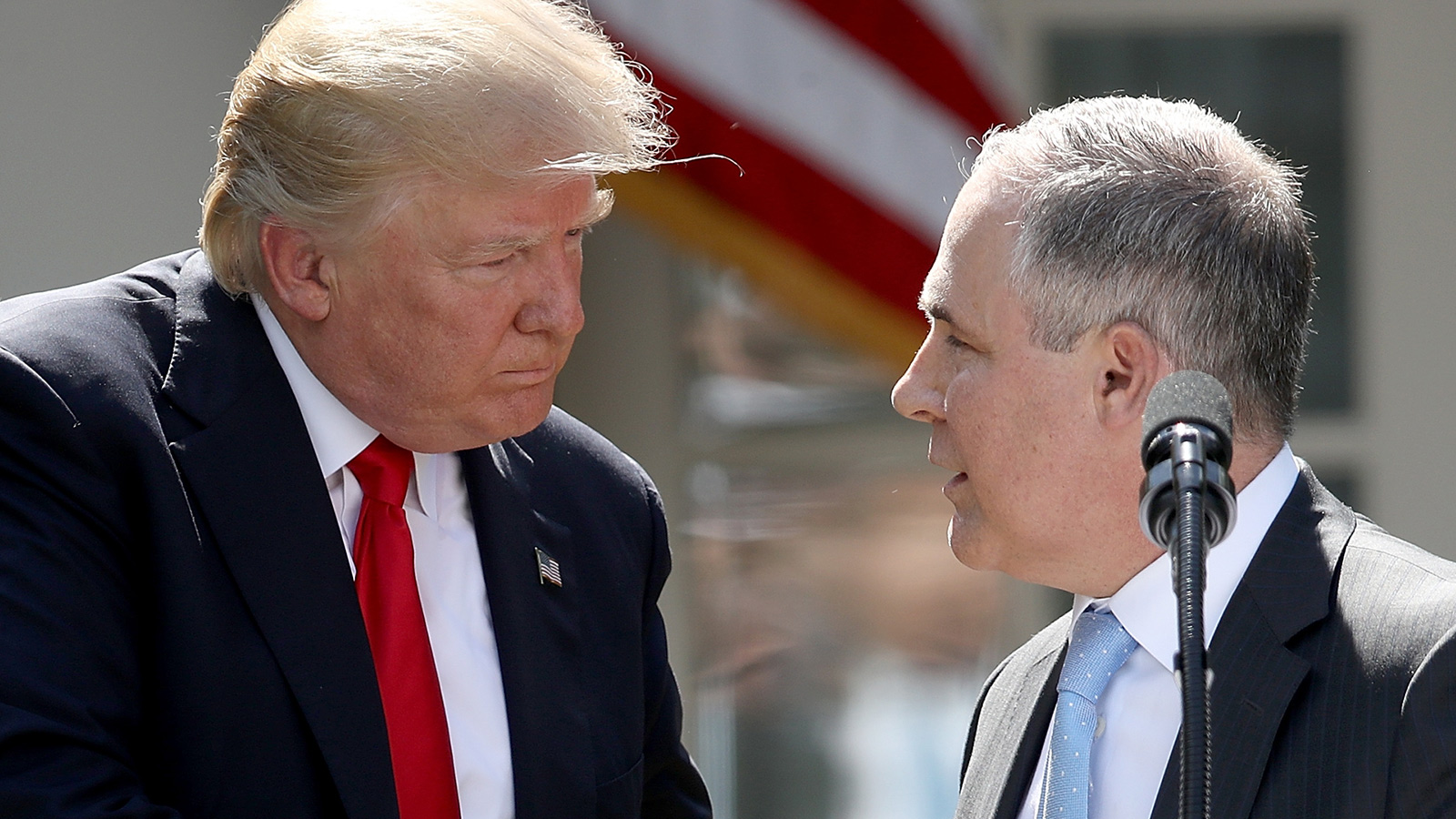In the recent Frontline documentary, War on the EPA, the CEO of the Murray Energy Corporation — the largest coal mining company in the United States — brags that he had given the Trump administration a three-page action plan on rolling back environmental regulations. Less than a year into his term, the president and his officials had already completed the first page, Murray Energy Corporation’s Bob Murray says in the film.
Indeed, the administration has gone straight to work undoing environmental safeguards: reevaluating emission standards for cars and trucks, pressing for the Keystone XL tar-sands pipeline, disbanding science advisory committees, lifting the moratorium on federal coal leasing, trying to expand offshore drilling, and opening national monuments and marine sanctuaries to energy companies. The EPA is working to eliminate rules on the leaking and flaring of methane and has rescinded requirements for reporting methane emissions. It is also stalling on monitoring carbon pollution. And, of course, the president announced his intention to withdraw the U.S. from the Paris climate agreement.
At the top of Murray’s wish list, Frontline reports, is repealing the Clean Power Plan, the 2015 EPA rule to reduce carbon dioxide emissions from American power plants. Many utilities and states support the initiative. But the big polluters do not. So it is in the Trump administration’s crosshairs. But any attempt to unravel Barack Obama’s signature environmental policy will likely have to survive a lengthy legal fight.
The benefits of the Clean Power Plan to public health, the climate, and the economy outweigh the costs of energy sector compliance by $26 billion to $45 billion every year, according to the EPA’s own calculations. In order to rescind the Clean Power Plan, EPA Administrator Scott Pruitt has to make those benefits disappear.
So he cooked the books, using two tricks:
The first derives from the fact that today’s carbon pollution causes harm and financial losses later — often many years after pollution is emitted. In financial accounting, future costs and benefits are balanced against present costs and benefits using a “discount rate.” The theory stipulates that it’s more valuable to receive a million dollars now than a million dollars, say, 20 years from now.
In 2015, the government set a 3 percent discount rate for the out-year costs of carbon pollution. In other words, a certain amount of carbon emissions costs $100 in harm and losses today, but is worth $97 one year later and roughly $94.26 two years later. Pruitt jacked that rate up to 7 percent, so out-year harm, injuries, and losses appear to cost less. Our children and grandchildren will suffer exactly the same harm, but this adjustment gives present-day polluters a big break on their emissions.
Pruitt’s second trick is to count only the harm from carbon pollution generated and accrued within the United States’ borders. In fact, we suffer from other countries’ emissions, and they suffer from ours. But if each country only counts its own emissions and its own harms, guess what happens? All the cross-border impacts never get counted. They still takes place in real life, but they vanish from the ledger.
As Michael Greenstone, an economist at the University of Chicago who helped develop the government’s estimate of the social cost of carbon, put it: Pruitt’s sleight of hand “was not evidence-based policymaking — this was policy-based evidence-making.”
Luckily, there’s a real obstacle to this fuzzy math becoming the new standard for pricing pollution. As the executive branch and Congress go about trying to blow up environmental regulations, the courts still stand in the way of the Clean Power Plan’s repeal.
They may take notice that these accounting stunts are “arbitrary and capricious” under the Administrative Procedures Act. They may take notice that Pruitt, who has long depended on campaign donations from the energy industry, has massive conflicts of interest in seeking the plan’s reversal.
They will surely note that the Supreme Court said in 2007 that greenhouse gases are pollutants under the Clean Air Act, and that the EPA is legally obligated to regulate them. They will surely note the agency issued its so-called “endangerment finding” in 2009, proclaiming that greenhouse gas emissions threaten the public health and welfare of current and future generations — a determination the D.C. Circuit resoundingly upheld in 2012. Hopefully, they will notice Pruitt’s stall tactics in preventing regulation of carbon pollution.
The Trump administration’s determination to carry out industry’s marching orders through bogus accounting or deliberate delay is a dire threat to environmental protection as we know it. But these tactics will face much stricter scrutiny in the truth-based arena of the federal courts.



